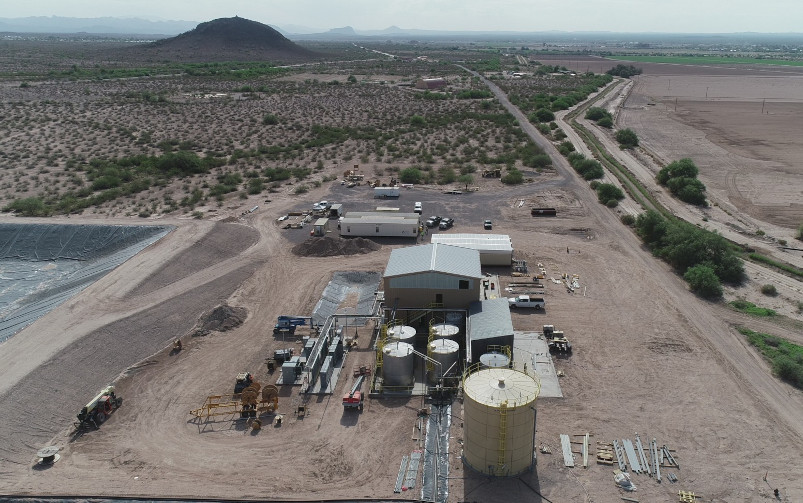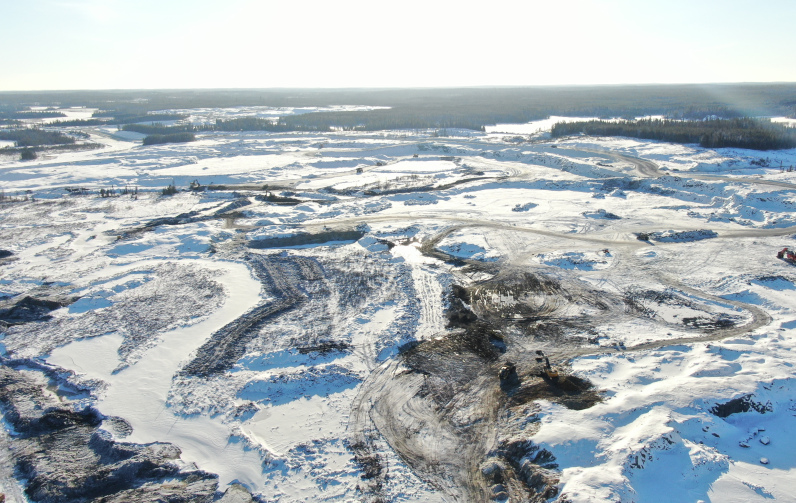Alamos Gold will be proceeding with the third phase of its Island Gold expansion after receiving a key permit from the Ontario government. Courtesy of Alamos Gold.
Welcome back to your weekly mining news recap, where we catch you up on some of the news you may have missed. This week’s headlines include Ontario’s new critical minerals strategy, a proposal from Rio Tinto to buy out Turquoise Hill and continued troubles over nickel at the London Metal Exchange.
Editor's Note: Last week we mistakenly wrote that nickel prices had reached $100,000 per pound instead of per tonne. We sincerely apologize for the error.
Critical minerals are currently a $3.5 billion-a-year industry in Ontario, their supply essential for the creation of green technologies. With a new five-year roadmap and $29 million in government investment announced by Premier Doug Ford, the province is setting itself up to become a key international player in critical minerals, as reported by CBC. Ontario’s ambition has already attracted the attention of top-level U.S. trade officials, the market at present being dominated by China, Russia and the Democratic Republic of Congo.
Rio Tinto announced its proposal to buy the remaining 49 per cent of the shares of Turquoise Hill it does not already own for US$2.7 billion. If accepted, the deal would give Rio Tinto a majority direct ownership stake in the Oyu Tolgoi copper mine, which is currently co-owned by Turquoise Hill and a Mongolian state entity and operated by Rio Tinto. The deal comes after the approval in January for long-awaited underground operations to commence.
The London Metal Exchange had a faltering return to nickel trading on Wednesday after it halted all trading last week when an unprecedented short squeeze drove the cost of the metal up to over US$100,000 per tonne, as reported by Reuters. Upon reopening, the LME had been trying to let the air out of the price balloon slowly by cutting off trading once the price fell a set percentage. Currently the price sits at US$42,150, about 42 per cent higher than the price on March 7, before the spike. The return to trading was glitchy, however, aggravating metals traders already edgy over the recent chaos.
Compass Minerals has been heavily investing in its Goderich salt mine to reduce its long-term maintenance costs and prepare it for another century of production. The mine, which moved to room-and-pillar continuous operations in 2013, expects to invest US$78.5 million by 2026 to keep its fleet up to par. “We’re setting up this mine for the long-term,” said George Schuller, chief operations officer.
Eight years after the Mount Polley disaster, three engineers have now been disciplined, as reported by Global News. At the time, a tailings dam failure unleashed over 20 million cubic metres of wastewater from the copper and gold mine into surrounding waterways. Two of the engineers have now incurred hefty fines and legal fees while the third, who was a junior engineer at the time, has had her registration temporarily suspended and was ordered to complete education courses.
With potash supply from eastern Europe in jeopardy due to Russia’s invasion of Ukraine, Nutrien has announced it plans to increase its own production by nearly one million tonnes to a total of 15 million tonnes for this year, as reported by Global News. The company’s output is expected to account for over 70 per cent of worldwide production this year. Even with a resolution of the conflict in Ukraine and Nutrien’s revised production goals, a supply gap in the potash market this year remains a possibility.
Alamos Gold has received a key permit from the Ontario government that will allow the miner to launch its third phase of expansion at its Island Gold mine located outside of Dubreuilville, as reported by Northern Ontario Business. The upcoming push will include the sinking of a new 1,379-metre shaft, budgeted for $684 million, which will access deeper and higher-grade portions of the ore body. Island Gold’s expansion plans are expected to increase life of mine as well as boost production by 70 per cent.
Teck’s Highland Valley Copper operations has received the Copper Mark verification, the first Canadian operation to do so. The verification is a voluntary assurance framework to promote responsible production and commitment to the United Nations Sustainable Development Goals. Plans are in the works for Teck’s other copper operations to eventually qualify for and earn the Copper Mark.
Marathon Gold has completed the provincial environmental assessment process for its Valentine Gold Project. The outcome of the federal environmental assessment is still awaited, its technical review of the environmental impact statement submitted by Marathon having just been completed.
Memorial University professors John Sandlos and Arn Keeling recently published their book Mining Country: A History of Canada’s Mines and Miners. The book presents the evolution of mining in Canada and provides important insights the origins of some of the the tension between miners and Canada’s Indigenous Peoples. Though mining experts may be familiar with most of its contents, the book is a “valuable and interesting read.”
That’s all for this week. If you’ve got feedback, you can always reach us at editor@cim.org. If you’ve got something to add, why not join the conversation on our Facebook, Twitter, LinkedIn or Instagram pages?




